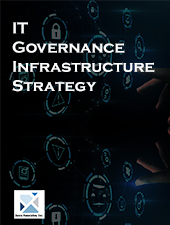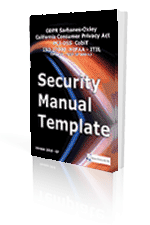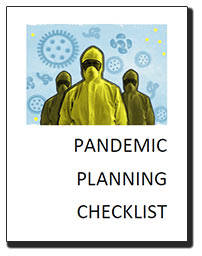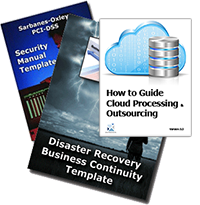Designing Infrastructure -- Focus of Many CIOs
 Designing IT Infrastructure requires CIOs to consider the globalized world they are now in. It is necessary and valuable for CIOs to understand the fundamental trends that are pushing businesses to redesign their operations around this new reality. Factors they should consider are:
Designing IT Infrastructure requires CIOs to consider the globalized world they are now in. It is necessary and valuable for CIOs to understand the fundamental trends that are pushing businesses to redesign their operations around this new reality. Factors they should consider are:
- Security - With the growing importance of digital applications and data, the sources of threats to enterprise data have multiplied dramatically. Everything from natural disasters to criminals to corrupt sources within the company might try to steal or corrupt data. While businesses do everything that they can to stop these threats in the first place, they still must be prepared to recover from these threats as quickly as possible.
- Business Continuity and Disaster Planning - As businesses have expanded the need for anytime, anywhere application access has become a requirement. At the same time, "follow the sun" (global 24/7) operations have shrinking maintenance windows and a need for applications to be running at all times. Delay or loss of data for any reason - system failure, natural disasters - has a domino-like effect across the entire organization, at any time of the day or night.
- Flexibility - Most businesses now operate across international borders and CIOs must be able to respond to opportunities and challenges faster than ever before. CIOs are usually battling well-resourced organizations that may be based where the opportunity originated, or another globalization company that is reaching out for new opportunities. In order to compete, a business has to be faster to deliver a product or service as good, or better, than that of potentially any other company in the world.
- Simplicity - Increases in technology have typically led to increased complexity. While per unit costs of technology are always decreasing, in aggregate companies see an increase in cost. With the pressure on IT to act less as a cost center and more as a way to increase the profitability of business units, just adding more storage, more bandwidth, or additional technologies throughout the organization is no longer an acceptable approach to managing information technology. Successful CIOs are investing in numerous technologies including; continuous data protection, visualization, and wireless connectivity. They are trying slim down IT's footprint while increasing their business's competitive advantages. The CIO is typically in a difficult position, assessing where to try and cut costs while still moving forward with a plan to continually enhance IT services to the business.
Read On Order IT Governance Strategy Download Sample
Unused Equipment
The question of what to do with unused IT equipment is a rapidly growing security problem for many companies hit by the recession and the accompanying layoffs. Countless desktops, laptops, servers and hand-held devices are lying around -- often with sensitive data on them -- gathering dust in cubicles, in stockrooms or on vacant desks. At the same time, software licenses, notoriously easy to lose track of, are also piling up. Many IT functions are under funded as enterprises drive for improved productivity and expense reductions. Decisions are made on in a spirit of making do. For example, Since no one is using the abandoned offices and equipment there is no risk...
When an organization is in survival mode, resources are being husbanded and everyone's working flat out, it takes a strength and leadership to say "no, not good enough" to something that is apparently working well. It is also difficult to justify more spending with no direct effect on revenues, and to demonstrate that something that seems optional is in fact required.
Responsibility for security and disaster recovery planning cannot be abdicated. It is hard enough for an organization to recover from a serious security breach at the best of times. These are not the best of times. Argued from the context of minimizing risk, the value of doing it right is clear. Make sure you're equipped to win that argument.
Read on Order Security Manual Template Download sample






